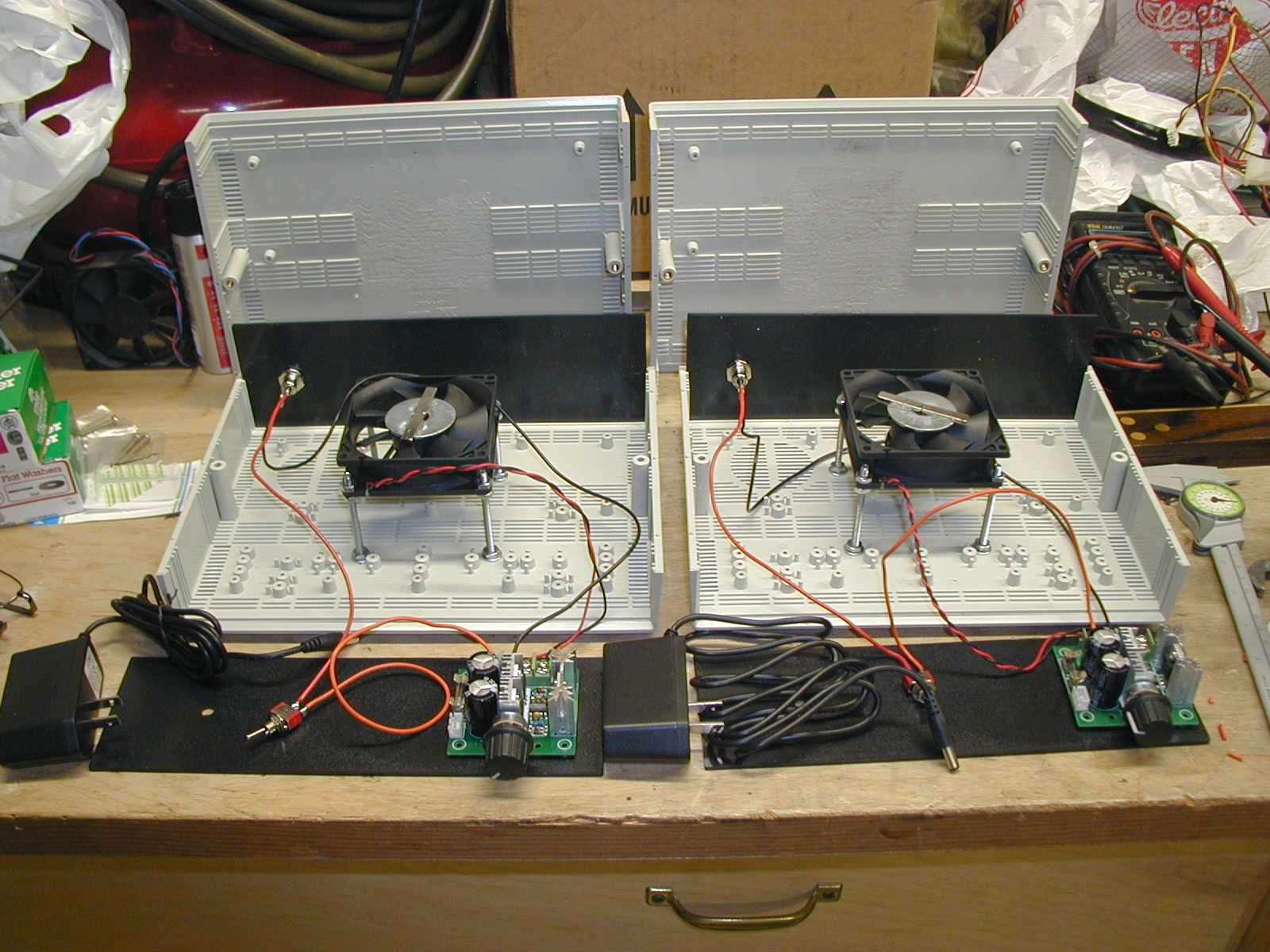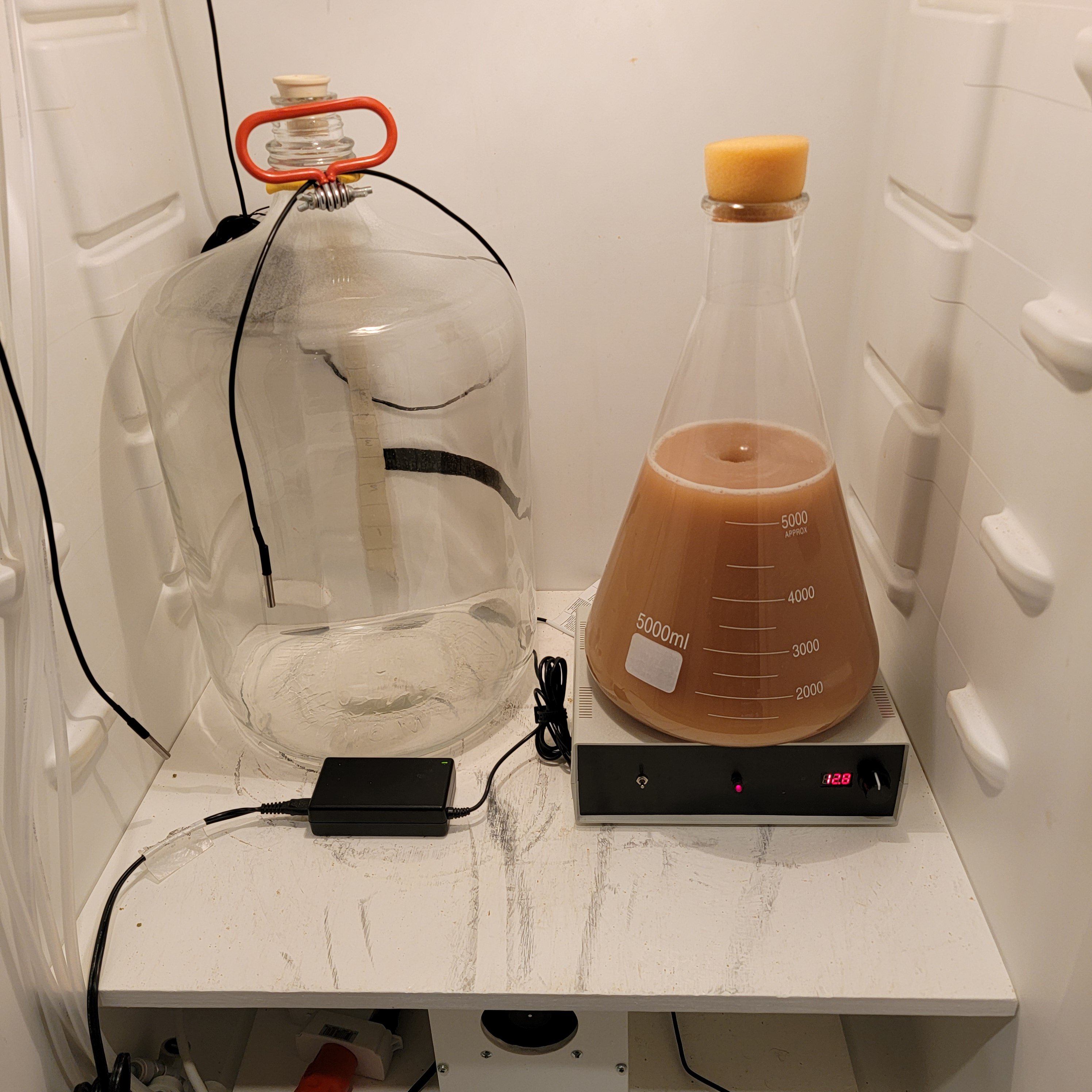That's what I thought. It seems like there is hardly any magnetism on top of the plate, and when you turn it to full speed it doesn't go any faster, in fact it almost seems like it slows. I have some good strong magnets at work to bring home and use.
In addition to strength of the magnetic field, the
shape of the stir bar can play a large role.
When I first got into propagating starters, I bought an assortment of magnetic ’stirrers’. Round, egg-shaped, gear-shaped, short bar, long bar, ribbed, smooth, etc. The one that works best for me was a two-inch ribbed bar design, at least for a 2,000 ml Erlenmeyer. A slightly shorter ribbed bar is best for the 1,000 ml flask.
I also have a seldom used 5,000 ml Erlenmeyer for which
nothing works adequately on my stir plate. But it sure looks cool in my brew space.
If your flask has a slightly convex bottom, having the stir bar precisely dead center over the rotational center of the magnetic induction bar can keep things spinning in the flask. Off center orientation induces a wobble that can cause the stir bar to get tossed. Once I get rotation of the bar in the flask, I gently move the flask a few millimeters until it’s centered.You’ll hear a change in sound as you do.
When the tapping sound is at a minimum, you’re in the center of the stir plate and the bar should not get tossed. Also, starting at a lower speed can help in finding the ‘audible’ center. You don’t need a whirlpool of wort to propagate. Just a constant moderate stirring is plenty to get the job done, and some argue that aggressive agitation actually stresses the yeast cells. YMMV.




































![Craft A Brew - Safale S-04 Dry Yeast - Fermentis - English Ale Dry Yeast - For English and American Ales and Hard Apple Ciders - Ingredients for Home Brewing - Beer Making Supplies - [1 Pack]](https://m.media-amazon.com/images/I/41fVGNh6JfL._SL500_.jpg)






















